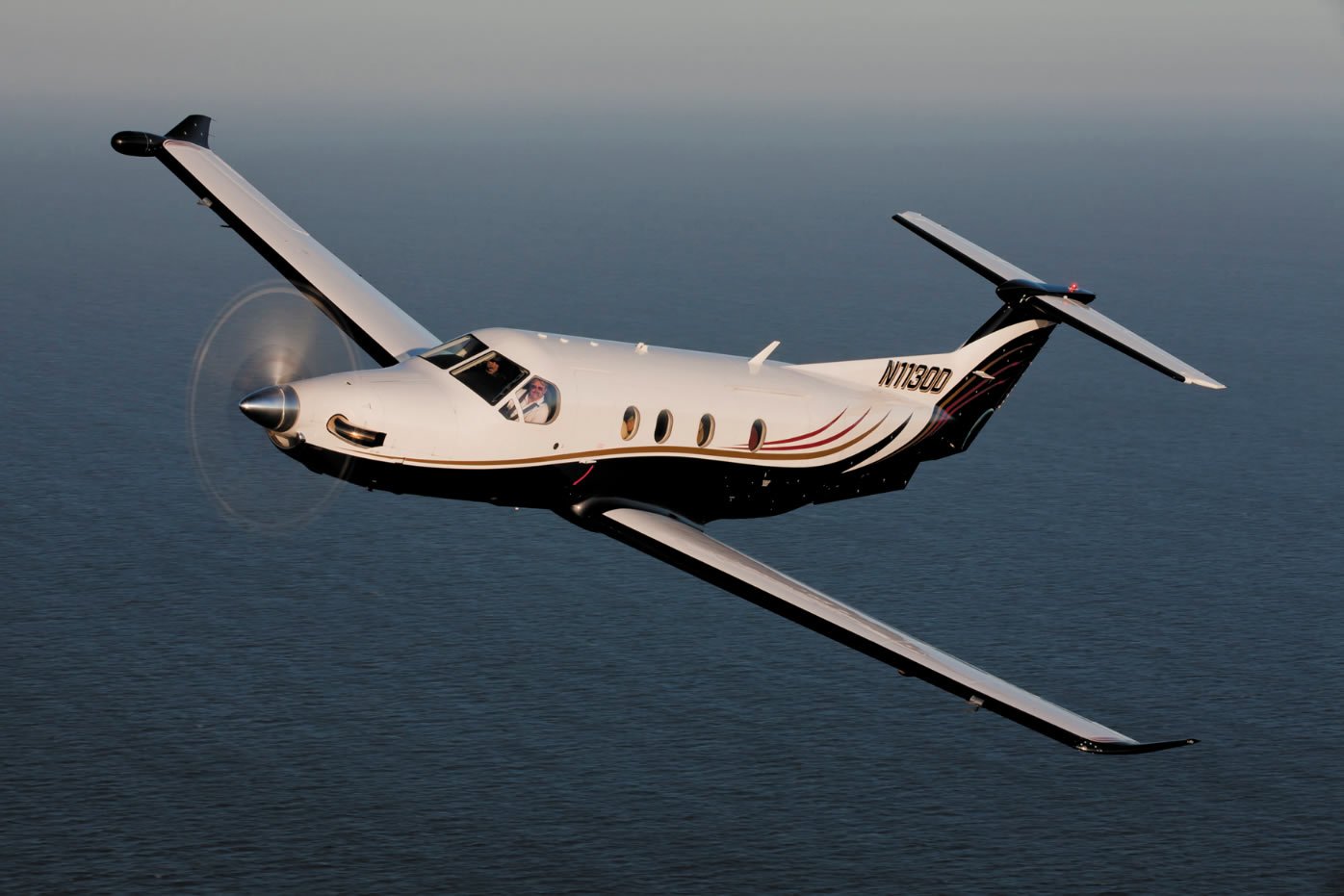Why the Original Gulfstream G400 (2003) Still Deserves Attention
7 min read
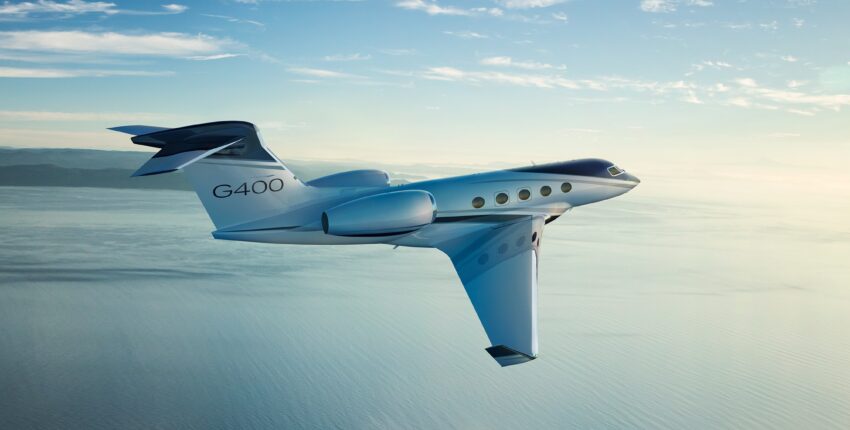
When people talk about the Gulfstream’s legacy, the G400 doesn't always get the spotlight. But maybe it should. Introduced in the early 2000s, the G400 was Gulfstream’s way of refreshing a proven formula.
Built as a successor to the GIV-SP, it carried on the strengths of that platform while updating the brand’s lineup for a new generation of buyers. By the way, we are talking about the “Heritage” G400, not to be confused with the new 2021-announced jet that shares its name.
In this review, we’ll explore the story of the G400. We will touch on how it came to be, what it offered, and explain why it still deserves attention from buyers and aviation enthusiasts alike.
How It Came To Be
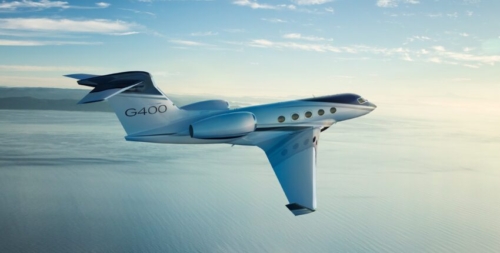
The G400 didn’t arrive with fireworks, but it did mark an important moment for Gulfstream in the early 2000s. It was announced in September 2002, basically to replace the GIV. At that point in Gulfstream, the GIV had already earned its stripes as one of the company's most dependable large cabin models. By December in the same year, production started in Savannah, and by early 2003, the jet received its FAA certification. Customers started taking deliveries not long after.
But here is the thing: the jet was never meant to be a long-run headliner. Production lasted barely two years and had only 23 examples built before the G450 came along in 2005.
Performance
If there is one thing the G400 was built to do well, it’s to cover distance. And the good part is, it does this without making the passengers feel like they are compromising. This jet could comfortably stretch past 4,100 nautical miles while cruising near Mach 0.88. This means nonstop trips like New York to London or Los Angeles to Bogota are well within reach.
On paper, the numbers are solid. The G400’s maximum range seats between 3880 and 4200 nautical miles, depending on conditions and reserves. Its maximum cruise speed pushed Mach 0.88-0.90, and long-range cruise sat closer to Mach 0.80-0.85.
But speed is not the only thing it’s got. It climbs strongly too, nearly 3700 feet per minute on both engines. And if one of the engines ever goes out, you still get about 700 feet per minute. Add this to a service ceiling of 45,000 feet, and you get why the G400 was well-respected.
Runway performance is another area where the jet excels. At sea level, takeoff requires just over 5,200 feet, stretching to around 5,700 feet depending on weight and conditions. Landings are flexible too, with distances ranging between 2650 and 4400 feet. That meant the G400 could get into plenty of smaller regional and secondary airports that other long-range jets couldn’t.
What It Looks Like On the Inside
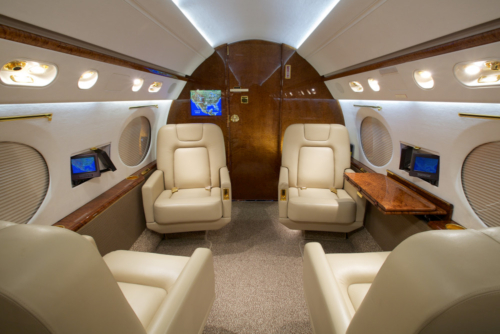
Once you step inside the G400, you get what Gulfstream is selling: space and comfort. At the time, it offered the largest cabin in its class (that wasn’t a marketing line). The cabin stretched over 45 feet long, more than 7 feet wide, and tall enough for most passengers to stand comfortably at just over 6 feet in height. Basically, you get 1658 cubic feet of usable space.
Now, the cabin itself can be divided into as many as three living zones (depending on how owners want to use it, of course). Up front, layouts often started with a club seating arrangement. The middle section could feature a conference-style table or a divan, and at the rear, owners sometimes added a private stateroom or lounge area. Due to this arrangement, it isn’t unusual to see G400s configured to seat 13 passengers, and it could push closer to 19.
The amenities also reflect the same philosophy. A full galley (forward or aft), a lavatory, and an entertainment system keep long flights civilized. Storage space is generous too, with 169 cubic feet of baggage volume, which is about a third more than many competitors. And with 12 of Gulfstream’s signature oval windows and a 100% fresh-air system, the cabin stays bright, quiet, and easy to breathe in.
And, it bears mentioning that cabin pressure is equivalent to just 4850 feet, meaning intercontinental legs are less fatiguing.
The Power and Systems Up Front
At the heart of the G400 are a pair of Rolls-Royce Tay 611-8 turbofans, each producing roughly 13,850 pounds of thrust. These engines aren’t flashy, but they are dependable. The type of dependable that means operators trust them for intercontinental missions.
Their efficiency made the jet’s Mach 0.88 cruise speed possible, and with an 8000-hour overhaul interval, they help keep long-term maintenance planning predictable.
Pilots, meanwhile, find themselves working with a cockpit that blends proven tech with forward-looking features. The standard suite is Honeywell’s SPZ-8400, a six-tube EFIS system that gives crews a clear digital picture of the flight environment. On top of that come extras that were ahead of their time. There’s a Head-Up Display that projects vital flight data directly into the pilot’s line of sight, and compatibility with Gulfstream’s Enhanced Vision System, which uses infrared imagery to improve low-visibility operations.
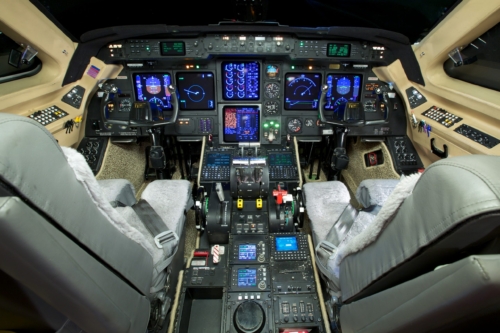
Some versions of the aircraft even got optional infrared countermeasures, which is great for security. Combined with updated warranties and support packages, these systems reinforced Gulfstream’s reputation for reducing downtime, a small but important part of the ownership equation.
Operating Costs
Buying a G400 is only the first step. The real question for any owner is what it costs to keep one flying year after year. Like most business jets, the G400’s expenses are split into two categories: fixed costs, which stay the same no matter how often you fly, and variable costs, which climb with every hour in the air.
For the fixed costs, you are looking at a total of about $632,000 per year. Here’s the breakdown for the major items;
- Crew salaries; $486,000 (depending on experience and if an attendant is included)
- Hangar Fees: $90,000 (often bundled in with crew packages)
- Insurance: about $45,000 for liability, with hull insurance factored into total packages
- Management and Misc: $78,000 for admin and about $28,000 for extras like navigation charts and modernization
With variable costs, you are looking at a per-hour expense of between $3900 and $4600, made up of;
- Fuel: $2200 – $3400 per hour (with the burn rate of 512 – 540 gallons)
- Maintenance: $400 – $600 per hour for airframe upkeep and labor
- Engine reserves: $690 – $750 per hour set aside for engine overhauls
- Airport and handling fees: $400 per hour
So what do all of these mean in practice? Well, it means that
- At 200 hours per year, owners would spend about $1.4 million
- At 300 hours per year, costs climb to over $2.5 million
- At 450 hours per year, the bill gets to about $4 million
For charter customers, these costs translate to an hourly rate of between $5500 and $8500. With the acquisition cost of about $5 –7 million back in the day, the G400 is no small investment.
What It Gets Right
The Gulfstream G400 carved out a reputation for being dependable, comfortable, and surprisingly good value in the pre-owned market. For operators looking for a Gulfstream pedigree without the price tag of the newer models, this jet ticked a lot of boxes. Some of those boxes include;
- Cabin space that set the benchmark. With a volume of 1658 cubic feet, seating for up to 19 passengers, and layouts divided into three zones, the G400 offered more room than its rivals.
- Reliability you could count on. The G400 was essentially a refined GIV-SP, and owners often praised it as extremely reliable. With its twin Rolls-Royce Tay 611-8 engines, the aircraft could cover 3880-4200 nautical miles, think Chicago to Berlin nonstop, and with a broader payload-range envelope than the original GIV.
- A cost-effective way into the Gulfstream club. Back in the early 2000s, the G400 was Gulfstream’s entry point into the large-cabin segment priced below the G500. Today, pre-owned values hovering between $5.8 and $7 million make it attractive to buyers who want Gulfstream reliability without spending G550 money.
Why It Could Be Better
For all its positives, the G400’s limitations are clear. And these limitations explain why Gulfstream moved on from it so quickly. Some of them include:
- A short-lived run. Now this isn’t a problem in and of itself. But with only 23 units produced between 2003 and 2004, fleet support is thinner than most other Gulfstream models. Parts are harder to source, and resale isn’t exactly straightforward.
- Outshined by the G450. Just two years after its debut, the G400 was replaced by the G450, offering an extra 250 nautical miles, a slightly longer cabin, and better high-elevation performance. That left the G400 feeling like yesterday’s news almost overnight.
- Aging tech and efficiency. Against its bigger siblings, the GV and the G550, the G400 falls really short. Older avionics mean that operators need to budget for modernization if they want the latest safety and navigation features.
Final Thought
The Gulfstream G400 may have been a brief chapter in Gulfstream’s lineup, but it left a mark and a reliable and cost-effective bridge between the GIV-SP and the G450. It may lack the range and tech of its successors, but its cabin, reliable engines, and relative affordability still make it a worthy consideration in the pre-owned market for buyers.



